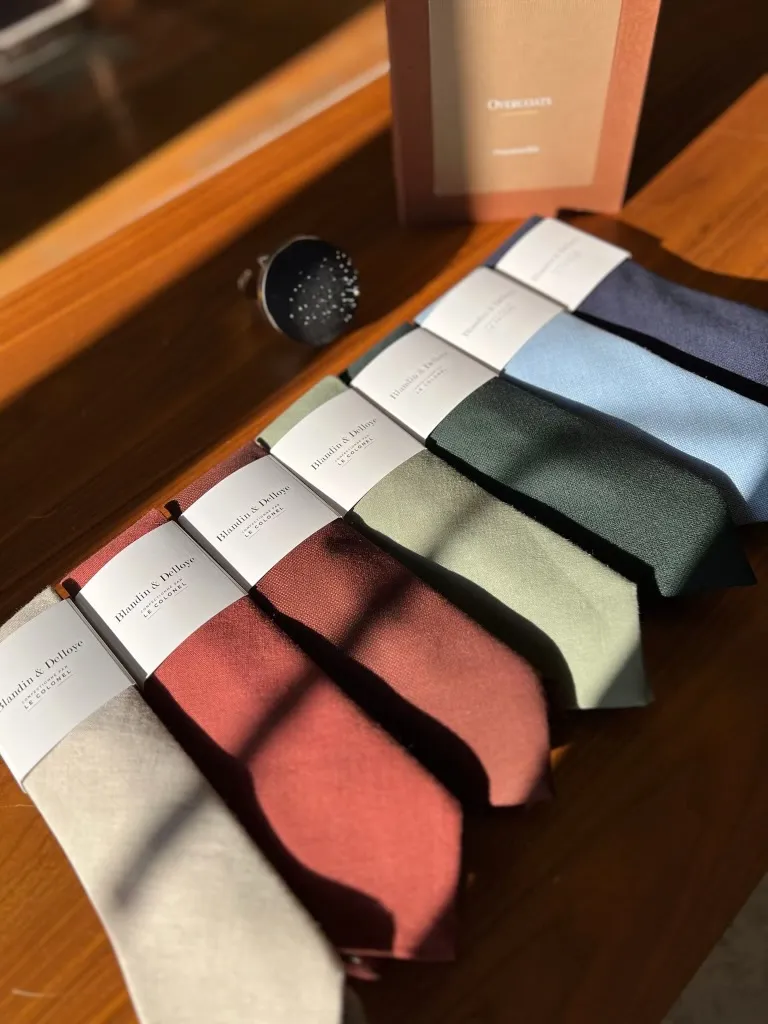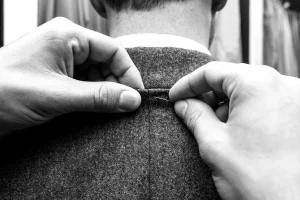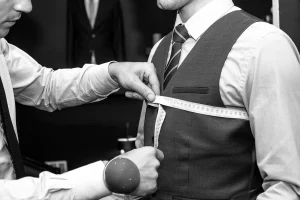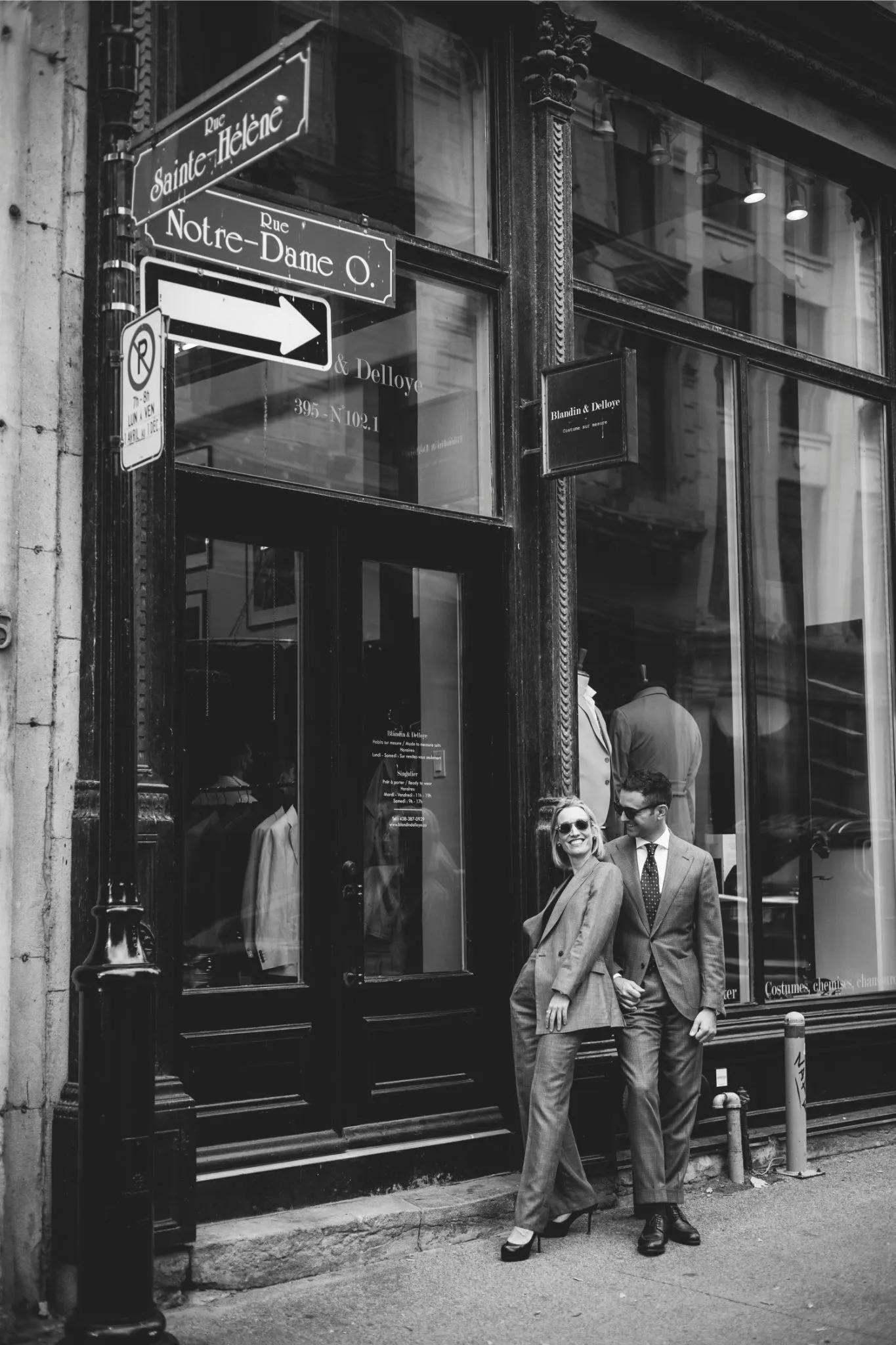
Once the standard, made-to-measure garments (i.e. custom-made or bespoke) have been largely replaced by “RTW” (i.e. ready-to-wear). However, as you know if you follow our blog, over the last few years a new vision of made-to-measure has been developing, with the emancipation of industrial made-to-measure.
It’s now possible to dress in made to measure from €200 to €7,000. So what do we mean by “made-to-measure”?
Simply put it’s a garment made from measurements taken on the body. But in fact, it’s much more complex than that!
Here’s a glossary of the different terms:
Ready-to-wear clothing (RTW):
A textile design office determines a pattern in a specific size. Then, based on this basic pattern, the office makes gradations (standardized modifications of the pattern to create one for each size). This is what we call ready-to-wear: a finished garment, adapted to the greatest number of people, with fixed characteristics and fabric. The customer chooses neither the fabric nor the characteristics of the suit, and the size is set.
Some people may talk about a “semi-custom” or “semi-bespoke” offer. This term has a vague definition. Some use it to mean ready-to-wear, with alterations included in the price. (A good address is JONAS & Cie, 19 Rue d’Aboukir, which offers RTW with alterations… But they call it RTW ;))

-
Industrial made to measure :
This is the core of the offer currently being developed: based on a pre-existing pattern (with gradation, as in mass production), the “style advisor” (who is not necessarily a tailor in the strictest sense) will take the customer’s measurements and/or carry out a fitting to identify exactly what modifications need to be made to the pattern. A new, unique pattern is created for the customer based on his or her measurements.
Another feature of demi-mesure is its “industrial” manufacturing process. This means that your suit is not assembled entirely by hand. In fact, over 50 hours of work are required by hand, compared to just 4 to 12 hours (depending on fused, half canvas and full canvas assembly) for an exclusively machine-made garment.
Blandin & Delloye makes half-measure suits. To ensure a perfect fit, we take your body measurements when you place your order. However, we consider this data to be largely insufficient. In fact, two people can be very different with identical measurements. Beyond our ability to identify your morphological characteristics by observing you, we are able to take them into account by trying on a template. This allows us to identify any alterations to be made to your garment. It also enables us to understand the level of comfort the customer is looking for.
We insist on our order-taking process because it’s the element that will determine the quality of the pattern-making work. Taking measurements alone does not guarantee a quality result.

-
Custom made :
Like industrial made to measure, custom tailoring is based on existing patterns but the tailoring part is handcrafted by a skilled tailor who can assemble your garment from start to finish. The quality of the product is comparable to that of a bespoke garment (the lifespan of an handcrafted suit: 10 to 100 years!). Beware, however, of semi-bespoke suits sold under the guise of “custom tailoring”, on the pretence that the workshop carries out more than 50% of the assembly by hand. It’s true that this makes a difference, but it’s still semi-bespoke. The percentage done by hand is not a sufficient criteria to define custom tailoring.
-
Bespoke tailoring :
Traditional tailoring is the best of the best ! To take advantage of it, you’ll have no choice but to turn to a bonafide tailor. And don’t forget to budget! Between €3,500 and €7,000 on average for a two-piece suit.
The tailor will take your measurements and note the first morphological alterations he identifies. He then works with a process of iterative pattern definition: the tailor will create an initial body of your suit in canvas, held together by basting threads. Various fittings are carried out throughout the manufacturing process. For the customer, this requires a greater personal commitment, given the frequency of contact.
The tailor will spend more than 50 hours making your suit, but will guarantee a perfect result!
Here’s a quick summary to help you make sense of buying a suit:

To conclude this article, two important reminders:
1- A good RTW suit is better than a bad made-to-measure suit.
2- Don’t mistake “traditional” for ” handcrafted “: handcrafted work is the opposite of industrial work, i.e. it’s not done in a garment workshop, but by a tailor involved from start to finish in the making of the suit.
As for “traditional” work, this is in fact the opposite of fused assembly: it’s called full-canvas. Blandin & Delloye offers both types of assembly (traditional and fused).
You can therefore find a suit in “traditional industrial” assembly, which corresponds to a product made in the traditional way in a garment workshop, where the piece is passed from hand to hand.
Although industrial assembly is standardized, finishing and interfacing can be done by hand, resulting in a suit that will stand the test of time.
